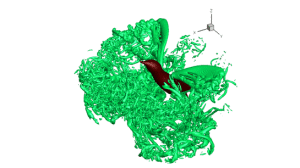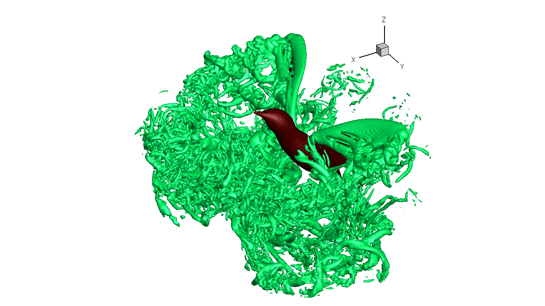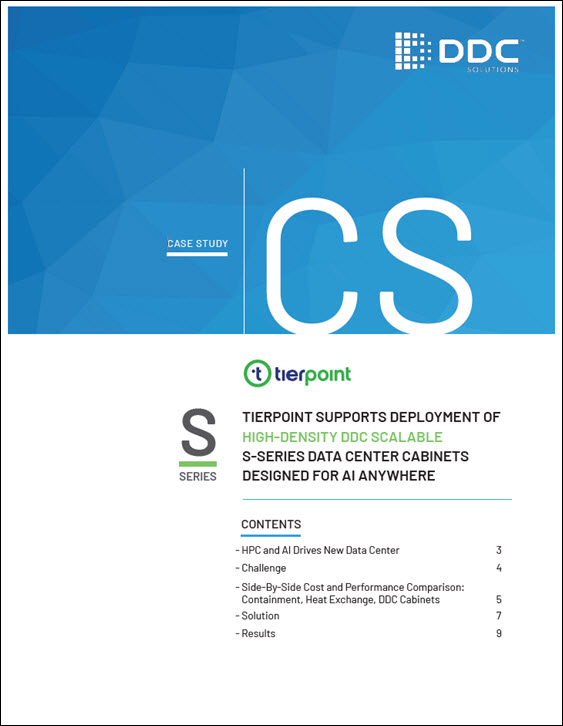
Three-dimensional vortex structures in the air flow during a stroke cycle of a hummingbird in hovering flight. Image Credit: Haoxiang Luo.
Over at TACC, Jorge Salazar writes that a researcher at Vanderbilt University is using the Lonestar supercomputer to understand how hummingbirds hover.
Using the derived force data, scientists can better understand the connections between wing motion, the force produced by that motion, and the power consumed in beating their wings.
It’s easy enough to see that when a hummingbird hovers, the vertical force from its wings equals its body weight. However, understanding goes out the window when one looks more closely. “The instantaneous force characteristics were previously unknown,” said Luo. “So was the three-dimensional flow stirred up by the bird. We are the first group to be able to directly quantify the time-varying forces within a stroke cycle.”
According to Luo, the computational challenges were daunting in simulating the instant-by-instant full-body simulation of a hummingbird’s hover. “For a hummingbird with only a 10 centimeter wingspan, the unsteady aerodynamics is complex enough to require millions of mesh points to resolve the many, many small vortices stirred up by the wings — the bird essentially is flying in an ‘ocean of vortices.’ Therefore, efficient algorithms and high-performance computing are necessary for this work.”
One of the interesting results from the study showed that most of the work done during a hover is on the wing’s downstroke, or forward stroke since the wings go back and forth while hovering. That’s even though the bird reverses its wings during the upstroke and sweeps them in a similar way as in the downstroke. For hummingbird fans, watching them dart off is as fun as watching them hover. Luo said he’ll study the stunt flying of hummingbirds in the next step of his research.
We will study the coupling of unsteady aerodynamics of the hummingbird wings with its flight dynamics to understand how the bird performs maneuvers — essentially all kinds of aerial stunts they can do, such as a rapid turn,” said Luo.
While understanding nature is one thing, scientists hope this research can be also used to help develop both micro and unmanned aerial vehicles.
Sign up for our insideHPC Newsletter.





